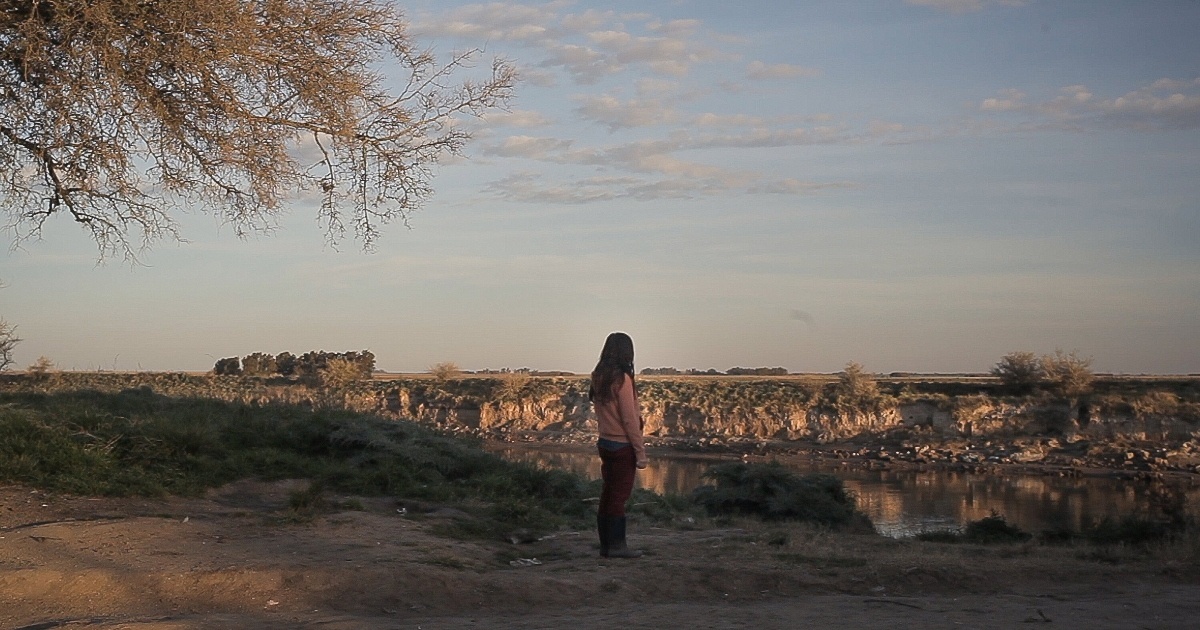
Cate Blanchett. Michelle Yeoh. Meryl Streep. Viola Davis. All of these names have the same thing in common, being their closeness to the conversation of “best living actress.” However, one of the real contenders for that title is increasingly becoming a relatively unknown titan of modern world cinema.
Trenque Lauquen is the latest film from Dog Lady director Laura Citarella and tells the story of a biologist and the repercussions of her sudden disappearance. The brilliant Laura Paredes stars here as Laura, whose mysterious disappearance sparks an investigation spearheaded by her boyfriend Rafael (Rafael Sprgelburd) and a potential, supplemental, love interest Ezequiel (Ezequiel Pierri) through the city of Trenque Lanquen and the surrounding area.
Broken down into a series of chapters, this 262-minute knockout starts off as a quiet character study about two men on the road in search of someone very close to them. It’s a lyrically told opening, that’s more or less two men meandering through their investigation and stopping to talk to locals when something arises. The performances here are intriguing and the poetic nature of the first two chapters points to a film that’s strangely experiential, but the film truly picks up in the third chapter, when Parades and her character come to life.
A women of obsession, the film spreads out and backward through time, introducing viewers to Laura and her fascination for a flower she’s studying as well as a romance she uncovers through the collection of love letters found within the library she’s studying in. Citarella uses this expansion of time and space to expand the film’s view as well, putting in conversation the two mysteries at the heart of the film. Laura is a flesh and blood character, a woman of interests and passion, and it comes through in the shots of Laura exploring the area around the titular city, uncovering something truly beautiful.
It is this conversation between the two timelines, and how each character bobs and weaves into and away from one another, that becomes the beating heart of the film. Citarella proves to be a truly talented crafter of images, giving her latest a powerfully intimate energy, that despite its long runtime, never once overstays its welcome. There are a few brief breaks from the realist aesthetic of the film, like a sequence of Laura and Ezequiel reading letters back and forth, that only adds more depth and humanity to the film. The photography here is often warm, pairing brilliantly with the film’s epic length, giving the overall work an almost literary feel. There’s so much told here through glances or gestures, that the performers are given a great deal of space to work.
Thankfully they’re uniformly up to the job. Both of the bumbling beaus give superb performances, but this is Paredes’ show. Laura is a one of a kind character, a quietly passionate woman who seems to have little drive for more in life than uncovering something new, and Paredes is more than up for the challenge. Particularly as she becomes more of a focus in the film’s back half, Paredes embraces Laura’s head first dive into the rabbit hole and does so with humanity and empathy. It’s a one of a kind performance from a one of a kind performer.
While the runtime may be a bit much for some (I myself saw this in two parts over two nights), there’s an energy to the chase that becomes infectious after a few moments. Modulated wonderfully by a director coming into her own, Trenque Laquen is an astonishing work.





![Bergman Island (The Criterion Collection) [Blu-ray]](https://criterioncast.com/wp-content/uploads/2022/11/bergman-island-the-criterion-collection-blu-ray-400x496.jpg)
![This Is Not a Burial, It’s a Resurrection (The Criterion Collection) [Blu-ray]](https://criterioncast.com/wp-content/uploads/2022/11/this-is-not-a-burial-its-a-resurrection-the-criterion-collection-blu-ray-400x496.jpg)
![Lars von Trier's Europe Trilogy (The Criterion Collection) [The Element of Crime/Epidemic/Europa] [Blu-ray]](https://criterioncast.com/wp-content/uploads/2022/11/lars-von-triers-europe-trilogy-the-criterion-collection-the-element-of-400x496.jpg)
![Imitation of Life (The Criterion Collection) [Blu-ray]](https://criterioncast.com/wp-content/uploads/2022/11/imitation-of-life-the-criterion-collection-blu-ray-400x496.jpg)
![The Adventures of Baron Munchausen (The Criterion Collection) [4K UHD]](https://criterioncast.com/wp-content/uploads/2022/11/the-adventures-of-baron-munchausen-the-criterion-collection-4k-uhd-400x496.jpg)
![Cooley High [Criterion Collection] [Blu-ray] [1975]](https://criterioncast.com/wp-content/uploads/2022/11/cooley-high-criterion-collection-blu-ray-1975-400x496.jpg)